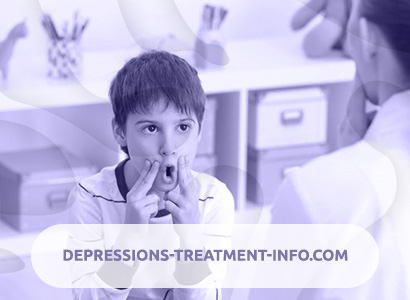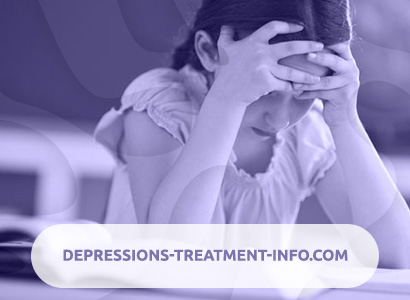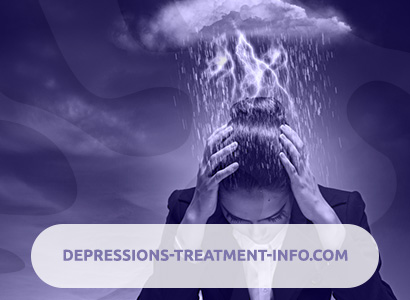What is Stuttering?
Characteristic features – frequent repetition or prolongation of sounds, syllables or words; or frequent stops, indecision in speech with violations of its smoothness and rhythmic flow.
Causes of Stuttering
The exact etiological factors are not known. Put forward a number of theories:
- The theory of “block stuttering” (genetic, psychogenic, semantogennaya). The basis of the theory is cerebral dominance of speech centers with constitutional predisposition to the development of stuttering due to stress factors.
- Theories of the beginning (include the theory of failure, the theory of needs and the theory of anticipation).
- The theory of learning is based on an explanation of the principles of the nature of reinforcement.
- Cybernetic theory (speech is an automatic process of the type of feedback. Stuttering is explained by the breakdown of feedback).
- Theory of changes in the functional state of the brain. Stuttering is a consequence of incomplete specialization and lateralization of language functions.
Recent studies suggest that stuttering is a genetically inherited neurological disorder.
Prevalence
Stuttering suffers from 5 to 8% of children. The disorder is 3 times more common in boys than in girls. In boys, it is more stable.
Symptoms of Stuttering
Stuttering usually begins before the age of 12 years, in most cases there are two acute periods – between 2-4 and 5-7 years. It usually develops over several weeks or months, starting with repeating the initial consonants or whole words that are the beginning of a sentence. As the disorder progresses, repetitions become more frequent with stuttering on more important words and phrases. Sometimes it may be absent when reading aloud, singing, talking to pets or inanimate objects. The diagnosis is made when the duration of the disorder is at least 3 months.
Clonic-tonic stuttering (disturbed rhythm, tempo, fluency of speech) – in the form of a repetition of initial sounds or syllables (logos), at the beginning of speech clonic convulsions with the transition to tonic.
Tonic-clonic stuttering is characterized by a rhythm disturbance, smoothness of speech in the form of hesitations and stops with frequent vocal enhancement and pronounced breathing disorders associated with speech. There are additional movements in the muscles of the face, neck and limbs.
During stuttering, there are:
- Phase 1 – preschool period. The disorder appears sporadically with long periods of normal speech. After this period, recovery may occur. During this phase, stuttering occurs when children are agitated, distressed, or when they need to talk a lot.
- Phase 2 occurs in primary school. The disorder is chronic with very short periods of normal speech. Children are aware and painfully experiencing their disadvantage. Stuttering concerns the main parts of speech – nouns, verbs, adjectives and adverbs.
- Phase 3 occurs after 8-9 years and lasts until adolescence. Stuttering occurs or increases only in certain situations (call to the board, buying in a store, talking on the phone, etc.). Some words and sounds are more difficult than others.
- Phase 4 occurs in late adolescence and in adults. Expressed fear of stuttering. Typical are word substitutions and bouts of wordiness. Such children avoid situations that require verbal communication.
The course of stuttering is usually chronic, with periods of partial remission. From 50 to 80% of children with stuttering, especially in mild cases, recover.
Complications of the disorder include a decline in school performance due to shyness, fear of speech disorders; restrictions in the choice of profession. For those suffering from chronic stuttering, frustration, anxiety, and depression are typical.
Diagnosis of Stuttering
Spastic dysphonia is a speech disorder similar to stuttering, but is characterized by the presence of a pathological breathing pattern.
Unclear speech, in contrast to stuttering, is characterized by erratic and disrhythmic speech patterns in the form of quick and sharp flashes of words and phrases. When speech is unclear, there is no awareness of his lack, while those who stutter are acutely aware of their speech disorders.
Stuttering Treatment
Includes several directions. The most typical is distraction, suggestion and relaxation. Stutterers are taught to speak simultaneously with the rhythmic movements of the arms and fingers, or in a slow and monotonous manner. The effect is usually temporary.
Classical psychoanalysis, psychotherapeutic methods are not effective in the treatment of stuttering. Modern methods are based on the point of view that stuttering is a form of learned behavior that is not associated with neurotic manifestations or neurological pathology. Within these approaches, it is recommended to minimize the factors that increase stuttering, reduce secondary disturbances, convince the stutterer to talk, even with stuttering, freely, without constraint and fear, in order to avoid secondary blocks.
An effective method of self-therapy based on the premise that stuttering is a specific behavior that can be changed. This approach includes desensitization, reducing emotional reactions, fear of stuttering. Since stuttering is what a person does, and a person can learn to change what he does.
Drug treatment is of an auxiliary nature and is aimed at alleviating the symptoms of anxiety, expressed fear, depressive manifestations, and facilitating communicative interactions. Soothing, sedative, fortifying agents (valerian, motherwort, aloe vera, multivitamins and B vitamins, magnesium preparations) are applicable. In the presence of spastic forms, antispasmodics are used: mydocalm, sirdalud, myelostane, diafene, amisyl, theofedrin. Tranquilizers are used with caution, mebikar 450-900 mg / day is recommended, with short courses. Significant effect is brought by courses of dehydration.
Alternative options for drug treatment:
- In the clonic form of stuttering, pantogam is used from 0.25 to 0.75 – 3 g / day., Courses lasting 1-4 months.
- Carbamazepines (predominantly tegretol, timonyl, or finlepsin retird) with 0.1 g / day. up to 0.4 g / day. within 3-4 weeks, with a gradual reduction of the dose to 0.1 g / day. as a supportive treatment, with a duration of up to 1.5 – 2 months.
Complex treatment of stuttering also includes physiotherapeutic procedures, courses of general and specialized speech therapy massage, speech therapy, psychotherapy using the suggestive method.


 What are School-specific Developmental Disorders?
What are School-specific Developmental Disorders? What are Specific Personality Disorders?
What are Specific Personality Disorders?